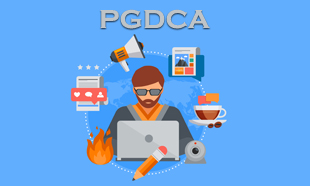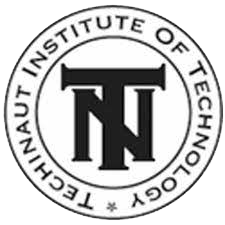7
Elevate your expertise with Ashish Academy's Post Graduate Diploma in Computer Application course in Jeypore, Koraput, Odisha. Master advanced software tools, programming languages, and IT concepts. Propel your career to new heights in the dynamic tech industry.
POST GRADUATE DIPLOMA IN COMPUTER APPLICATION
In the digital transformation era, proficiency in computer applications has become essential for individuals seeking to advance their careers in various fields. Recognizing the growing demand for skilled professionals in the field of information technology, Ashish Academy, a franchise of Techinaut Institute of Technology located in Jeypore, Koraput, Odisha, offers a comprehensive one-year duration course named "Post Graduate Diploma in Computer Application (PGDCA)." This program is meticulously designed to provide students with advanced knowledge and practical skills in various facets of computer science, preparing them for rewarding careers in the dynamic world of technology.
THE OBJECTIVE OF THE COURSE:
The primary objective of the Postgraduate Diploma in Computer Application (PGDCA) course is to equip students with advanced knowledge and practical skills in computer applications, software development, and information technology. The course aims to enhance students' proficiency in essential software tools, programming languages, and problem-solving techniques through a rigorous curriculum and hands-on training. By the end of the course, students will be well-prepared to pursue career opportunities in software development, IT consulting, system analysis, and other related fields.
COURSE OVERVIEW:
Curriculum Overview
The PGDCA course encompasses many topics, covering theoretical concepts and practical applications in computer science and information technology. The curriculum is structured to provide students with a comprehensive understanding of fundamental principles and advanced techniques in various areas of computer applications. Below is an overview of the key topics covered in the PGDCA course:
1. Basic Computer
The course begins with an exploration of the basics of computer science, providing students with a foundational understanding of computer hardware, software, and operating systems. Topics covered include computer architecture, data representation, binary arithmetic, and memory management.
2. Computer Appreciation
Building upon the basics, students delve into computer appreciation, gaining insights into the evolution of computing technology and its impact on society and business. They explore emerging trends in computer applications, such as cloud computing, artificial intelligence, and data analytics.
3. Computer Organization
In this section, students learn about the architecture and organization of modern computing systems, including CPU, memory, storage devices, and input/output devices. They gain insights into computer components' function and interaction and explore advanced concepts such as pipelining, parallel processing, and multiprocessing.
4. Operating System
Students receive comprehensive training in operating systems, understanding their role in managing computer hardware resources and facilitating user interaction. They explore operating systems, including Windows, macOS, Linux, and Unix, and learn about process management, memory management, file systems, and security mechanisms.
5. MS Word Processing
Most of the course is dedicated to mastering word processing software, such as Microsoft Word. Students learn advanced features such as document formatting, mail merge, macros, and collaboration tools. They also explore techniques for creating professional documents, reports, and presentations.
6. MS Spreadsheet Package
Students acquire advanced skills in using spreadsheet software, such as Microsoft Excel, for data analysis and visualization. They learn about advanced formulas and functions, pivot tables, data validation, and conditional formatting. Additionally, students explore techniques for analyzing and interpreting financial data using Excel.
7. MS Presentation Package
In this section, students learn to design and deliver impactful presentations using software like Microsoft PowerPoint. They explore advanced features such as slide transitions, animation effects, multimedia integration, and slide master customization. Students also learn effective presentation techniques and strategies for engaging audiences.
8. Information Technology and Society
Students gain insights into the role of information technology in society and its impact on various aspects of life, including education, healthcare, business, and government. They explore ethical, social, and legal issues related to information technology, such as privacy, security, intellectual property, and digital divide.
9. Introduction to Internet
Students are introduced to the Internet and learn its history, infrastructure, and critical services. They learn to navigate the web effectively, use search engines to find information and evaluate online resources for reliability and credibility. Additionally, students explore internet safety and security measures.
10. Internet Network
In this section, students learn about internet protocols, networking technologies, and communication protocols. They gain insights into TCP/IP, DNS, HTTP, FTP, and other internet protocols and explore techniques for configuring and troubleshooting network connections.
11. E-Mail
Students gain proficiency in using e-mail as a communication tool, learning to create, send, receive, and manage e-mails efficiently. They explore features such as e-mail composition, attachments, folders, and filters to organize their inbox and streamline communication. Moreover, students learn about e-mail etiquette and best practices for professional communication.
12. Introduction to Programming
Students are introduced to programming concepts and techniques, understanding fundamental principles such as variables, data types, control structures, and functions. They explore programming paradigms, such as procedural, object-oriented, and functional programming, using C, C++, and Java.
13. Algorithms for Problem Solving
In this section, students learn about algorithms and data structures for solving computational problems efficiently. They explore algorithm design techniques, such as divide and conquer, greedy algorithms, dynamic programming, and backtracking. Students also gain practical experience in implementing algorithms in programming languages.
Hands-On Training and Projects
Students engage in hands-on training sessions and practical projects throughout the course to apply their knowledge and skills in real-world scenarios. They work on assignments, case studies, and collaborative projects that simulate the demands of the IT industry, allowing them to demonstrate their proficiency in computer applications and problem-solving abilities.
CONCLUSION:
In conclusion, the Post Graduate Diploma in Computer Application (PGDCA) course offered by Ashish Academy provides students with advanced knowledge and practical skills in various aspects of computer science and information technology. Through a comprehensive curriculum covering fundamental principles, advanced techniques, and practical applications, students are equipped to pursue rewarding careers in software development, IT consulting, system analysis, and other related fields. With its focus on hands-on training and real-world projects, the PGDCA course prepares students to excel in the dynamic and competitive field of computer applications.


